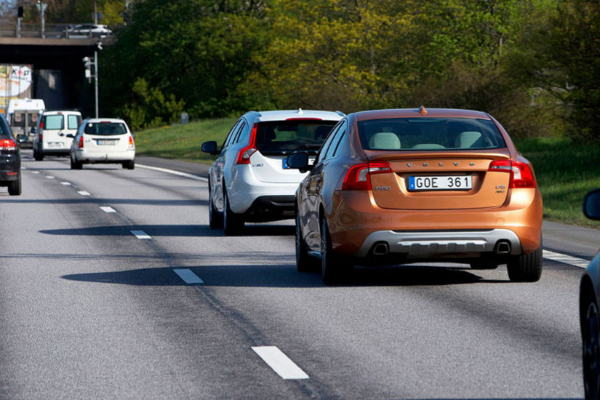Regulations: The Government strengthens the card by points and introduces the emergency light V-16
Balance: Pegasus radar fines one in four cars that it monitors
Videos The 'normality' of the roads: piques, harassment of other cars, WhatsApp behind the wheel ...
Report. Almost 3.9 million complaints in 2020
Since they began operating back in 2013, the Pegasus radars installed on board helicopters of the DGT, have become the invisible nightmare of drivers.
Able to fine from 300 meters high, a kilometer away in a straight line and vehicles traveling up to 360 km / h, they do not fly much (surveillance hour is extremely expensive), but they have a good crop of complaints: they hunt one in four vehicles they lay their eyes on.
Most of these complaints, as is the case with all those imposed by the DGT, are related to speeding since, in the distance, it is easier to detect a vehicle that is moving much faster than the rest.
But also, as with drones, they monitor traffic in general to detect and record illegal behavior.
For example, not keeping a safe distance.
This is one of the basic rules of the road.
But it is something that many irresponsible people do not respect by harassing the car they want to pass, and that, honestly, most drivers do not maintain either.
And it is that according to the indications of the DGT
at only 90 km / h it would be necessary to leave a margin of 81 meters (the equivalent of 18 medium-size cars) and 120 km / h, that would be 144 meters.
This is based on the rule of the square, which is easy to apply: at whatever speed we take, the last figure is removed and what remains is squared.
Photographs are not enough to file a complaint
Well, a ruling of the Administrative Litigation Court No. 1 of the Toledo of December 23, 2020 and against which there is no appeal, will make it very difficult for the Pegasus radars to continue imposing fines for this reason.
This is the case of a driver, defended by the specialized company Pyramid Consulting,
who was proposed a fine of 200 euros and the withdrawal of four points from the license for
"driving, on December 17, 2018, behind another vehicle without leaving free space that allows it to stop, without colliding, in the event of sudden braking of the preceding one ".
The alleged infringement, which would violate article 54.1 of the General Traffic Regulations,
occurred at km 21 of the A42, decreasing direction, and as proof of the fact, the DGT provided different photographs.
The file was appealed by the driver, arguing that this evidence (together with the report of the complaint) was insufficient to punish him and the court has agreed.
Specifically,
the sentence argues that "the photographs that are provided to the file do not allow to conclude how far one vehicle is from another" and it says that neither does it speak or reason about what space
the car had to leave, nor do they mention the specific circumstances related to speed, braking or grip that also influence that distance.
Therefore, it
resolved to accept the contentious administrative appeal
presented, annul the contested resolution, return the amounts that could have been paid as a result of the complaint and also
obliges Traffic to pay the costs.
According to the criteria of The Trust Project
Know more
Traffic
Traffic accidents
DGT
Engine
MotorInvestigate the driver of a bus to travel 33 km using the mobile
Motor Complaints on the road in 2020 fell less than mobility: 3.9 million
Road Safety What you need to know about emergency beacons
See links of interest
Holidays 2021
Barça - Unicaja
Real Madrid - Atalanta, live
Manchester City - Borussia Mönchengladbach

